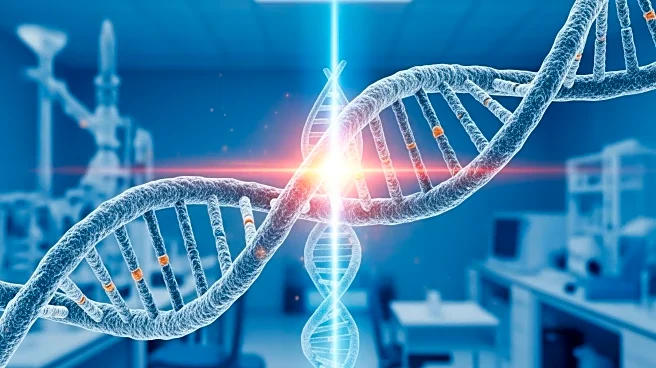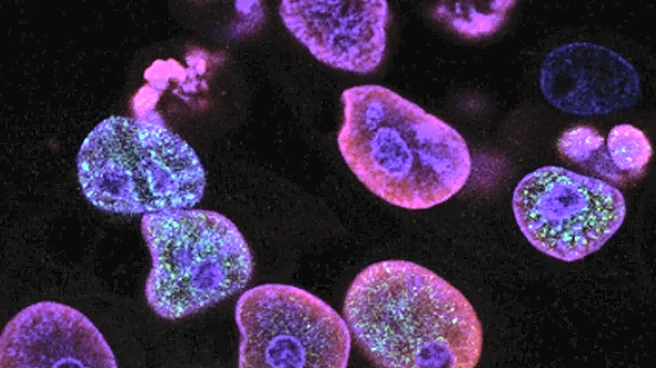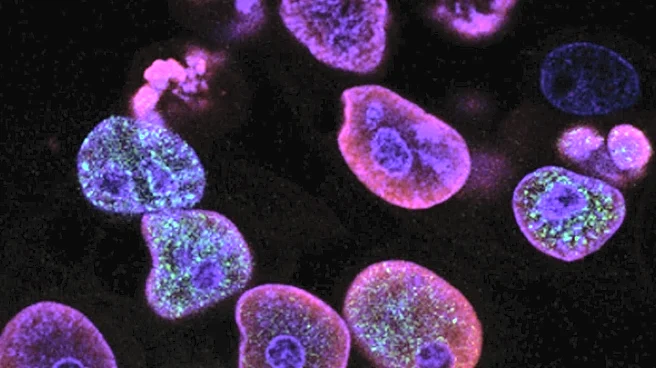What is the story about?
What's Happening?
A recent study has highlighted the potential of Kisspeptin-10 (KP-10) as a therapeutic agent in treating triple-negative breast cancer (TNBC), a subtype known for its aggressive nature and lack of targeted therapies. The research focused on the effects of KP-10 on two TNBC cell lines, MDA-MB-231 and MDA-MB-468, revealing significant subtype-specific responses. KP-10 was found to modulate the expression of several transcription factors involved in tumor progression and epithelial-to-mesenchymal transition (EMT), suggesting its role in suppressing mesenchymal aggressiveness. The study demonstrated that KP-10 treatment led to the downregulation of oncogenic transcription factors and the upregulation of differentiation-associated genes, indicating a shift towards a less invasive phenotype. Additionally, KP-10 exposure resulted in anti-migratory effects and apoptosis induction, further supporting its therapeutic potential in TNBC.
Why It's Important?
The findings from this study are significant as they offer a potential new avenue for treating triple-negative breast cancer, which is notoriously difficult to manage due to the absence of hormone receptors and HER2 expression. The ability of KP-10 to suppress oncogenic pathways and promote apoptosis in TNBC cells could lead to the development of more effective treatments for this aggressive cancer subtype. This research not only highlights the therapeutic promise of KP-10 but also underscores the importance of exploring multi-target agents that can address the complex molecular landscape of TNBC. If further validated, KP-10 could become a key component in the treatment regimen for patients with TNBC, potentially improving survival rates and quality of life.
What's Next?
Future research is expected to focus on in vivo validations and mechanistic studies to further assess the translational value of KP-10 as a therapeutic modulator in TNBC. Researchers may explore the downstream signaling cascades, such as MAPK/ERK and PI3K/AKT, that mediate the regulatory shifts observed with KP-10 treatment. Additionally, studies leveraging stable isotope tracing and metabolic flux analysis could help delineate the causal sequence of events and clarify whether the metabolic shifts induced by KP-10 are upstream signals or downstream consequences of transcriptional rewiring. These efforts will be crucial in determining the full therapeutic potential of KP-10 and its application in clinical settings.
Beyond the Headlines
The study's findings also suggest broader implications for cancer treatment, particularly in the context of personalized medicine. The subtype-specific responses observed in TNBC cell lines indicate that KP-10's effectiveness may vary based on the molecular characteristics of individual tumors. This highlights the need for personalized treatment strategies that consider the unique genetic and phenotypic profiles of cancer patients. Furthermore, the research underscores the potential of targeting transcriptional and metabolic pathways in cancer therapy, offering insights into how multi-target agents like KP-10 can be used to rewire oncogenic networks and improve clinical outcomes.
AI Generated Content
Do you find this article useful?













